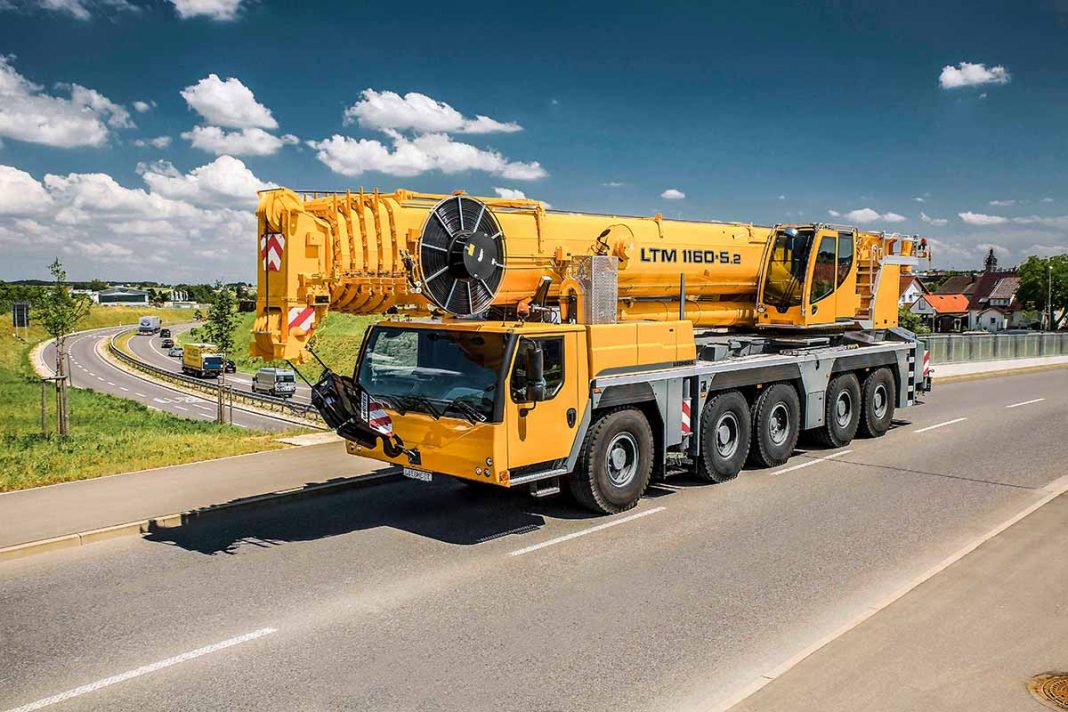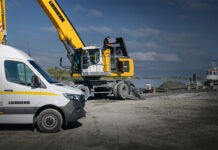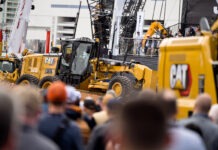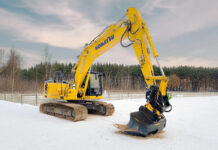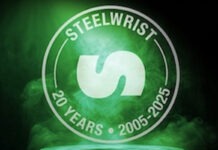In order to achieve the international climate objectives, economies worldwide must reduce their greenhouse gas emissions significantly in all sectors. This also applies to the construction industry and its partners.
This is why Liebherr, as one of the largest construction equipment manufacturers, is also working on new, efficient drive concepts. In doing so, the company focuses on technology neutrality which has been affirmed by a recent study.
Biberach/Riss (Germany), June 2022 – On behalf of the Liebherr Group, the consulting firm Frontier Economics conducted a life cycle analysis of greenhouse gas emissions of typical construction machines equipped with various drive technologies. The experts determined how much CO2 arises from production to operation through to the recycling of the machines.
The aim of the analysis was to comprehensively calculate the emissions of the machines and their drives in order to be able to recognise and assess how greenhouses gas emissions can be most effectively reduced. In doing so it is important to look at the overall life cycle of the machines.
This ranges from the mining and transport of the raw materials to production and the actual operation of the machine to the disposal and recycling: “Emissions analyses are generally limited to the operating phase. This is not enough for our products because greenhouse gas emissions also occur in the upstream and downstream phases of construction machines’ lifecycles,” states Stephen Albrecht, Member of the Board of Directors of Liebherr-International AG.
“To get a complete picture, we examined all stages of the life cycle, including the production of energy and provision of the infrastructure.” These results are combined in a so-called product carbon footprint, which describes the emissions of a product throughout the entire life cycle.
Dedicated solutions: E-drive for small wheel loaders or concrete mixers, hydrogen and HVO for mobile cranes
The study examined three types of construction machines: mobile cranes, truck mixers and wheel loaders. As evidenced by the collected data, the three types require different drive technologies in order to reduce as much emissions as possible due to their different performance requirements:
For truck mixers, electric drives make the biggest contribution to emissions reductions provided they use one hundred percent renewable electricity for charging. For mobile cranes, operation with hydrotreated vegetable oil (HVO) shows the biggest savings potential. Important is that the HVO is certified to be produced from plant and food waste, for example, and does not contain palm oil.
Hydrogen made from CO2 neutral sources follows in second place. In the long term, operation with hydrogen seems optimal as the availability of HVO in the vast quantities required cannot yet be predicted. However, until the required hydrogen infrastructure and drive technologies are mature, HVO delivers the best results as an interim technology, particularly in existing fleets with combustion engines.
Wheel loaders should be operated either with a battery electric drive charged with renewable electricity, or with e-fuels. “The results of the life cycle analysis show that there is no uniform solution for climate-neutral drives of construction machines,” adds Albrecht. Liebherr therefore relies on a technology neutral approach and can thus reduce emissions as much as possible depending on the machine and the application.
A look at the Liebherr product portfolio, which includes 13 product segments and is particularly broad especially in the area of construction machines, illustrates what leads Liebherr to compare various drive technologies.
The smallest machines have a power output of 30 kW, the largest have a power output of more than 3,000 kW. All these machines must perform reliably in completely different conditions in diverse applications.
“A wheel loader on an urban construction site, for example, is exposed to different conditions than a mobile crane used in the construction of wind turbines,” explained Albrecht. “The former can often be powered by electricity. In contrast, infrastructure projects in rural areas often lack the necessary power supply for an electrical connection. In addition, more energy is often required than can be provided with a battery-operated electric drive.”
Diversity wins: Liebherr thinks globally when it comes to reducing emissions
Against this background Liebherr demonstrates pioneering spirit and researches different technologies – always with a global and holistic perspective. The engineers work with the wide range of climate-neutral fuels and drive technologies: from certified hydrotreated vegetable oil (HVO) to e-fuels made from green electricity, water and CO2, battery electric drives and hydrogen drives, be it hydrogen combustion engines or hydrogen fuel cells.
At the moment HVO is particularly interesting for the company because it is an already available, interim technology. It has the advantage that it can be used in older construction machines with diesel engines. These machines are often in use even longer in many regions of the world – and continue to cause emissions there. Emissions can also be reduced significantly with HVO as a diesel admixture – a further contribution to reducing climate change.
Technology neutral approach, multipath strategy
Based on the results of the life cycle analysis, Liebherr is in favour of adopting a technology neutral approach in the transformation of the construction industry. “Effective climate targets and incentives for the construction machinery sector must enable technological diversity so that the most environmentally friendly technology can be used depending on the performance requirements,” adds Albrecht.
In this light, battery electric should not be viewed as a universal solution, but as one important technology in the future drive mix. Apart from electric drives, it is just as important to closely monitor the topic of hydrogen. The regulatory conditions for producing hydrogen and e-fuels, which are made from renewable sources, must also be established. After all, the interaction of all these technologies allows optimal solutions to be created for all application scenarios in the construction machinery sector.
Electric excavators and cranes from Liebherr
The intensive research and development work is already bearing fruit. For example, Liebherr’s programme already includes several construction and mining machines with zero-emission drive technology. One of around ten electric crawler excavator models is the crawler excavator R 976-E, which is supplied with electricity via cable. The excavator’s drive system produces hardly any noise during operation and zero local emissions. Or the all-electric truck mixers ETM 1005 and ETM 1205, whose batteries are charged between travel to and from the jobsite or overnight.
A third example is the world’s first battery-operated crawler crane, the LR 1250.1 unplugged. The machine can be operated on site either with a conventional electrical connection or without a cable, hence “unplugged”, – with no reduction in performance compared to the diesel model. Liebherr also promotes the use of HVO in its factory in Ehingen, among other places.
Since September 2021, all new mobile and crawler cranes produced there are filled with one hundred percent HVO before delivery to customers, and are also operated with HVO for on-site crane acceptance tests and test drives. The Liebherr factory in Kirchdorf a. d. Iller has followed suit: HVO is used for first filling and acceptance tests of earthmoving and material handling machines since January 2022. The factories’ internal logistics are also changing over to the climate-neutral fuel.


